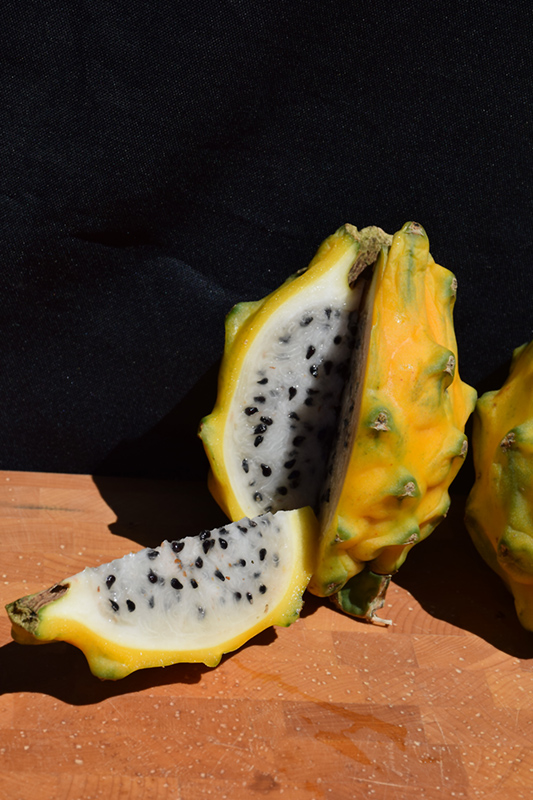Yellow Dragon Fruit
Description
An exotic cactus with creeping, sprawling , or climbing stems that are spiny, and will branch profusely; scented, nocturnal white and green flowers appear in late spring, followed later by delicious, yellow, spiny fruit; excellent for use in containers
Landscape Attributes
Yellow Dragon Fruit is a large succulent evergreen plant with an upright spreading habit of growth. It commonly grows as a shrub-like plant with multiple 'branches' and stems. As a type of cactus, it has no true foliage; the body of the plant is wholly comprised of a linked series of spiny green stem segments which are connected together to form the branches of the plant.
Yellow Dragon Fruit is recommended for the following landscape applications;
Planting & Growing
Yellow Dragon Fruit will grow to be about 10 feet tall at maturity, with a spread of 10 feet. It has a low canopy with a typical clearance of 1 foot from the ground. It grows at a medium rate, and under ideal conditions can be expected to live for 60 years or more. This is a self-pollinating variety, so it doesn't require a second plant nearby to set fruit.
This plant should only be grown in full sunlight. Unlike most cacti, which are known for their strong preference for hot, dry growing environments, this plant is native to tropical climates and grows in areas with more humidity and rainfall than most cacti. It does best in average to evenly moist conditions, but will not tolerate standing water. Like most succulents and cacti, this plant prefers to grow in poor soils and should therefore never be fertilized. It is not particular as to soil type or pH. It is somewhat tolerant of urban pollution. This species is not originally from North America. It can be propagated by cuttings.
Yellow Dragon Fruit is a fine choice for the garden, but it is also a good selection for planting in outdoor pots and containers. Its large size and upright habit of growth lend it for use as a solitary accent, or in a composition surrounded by smaller plants around the base and those that spill over the edges. It is even sizeable enough that it can be grown alone in a suitable container. Note that when growing plants in outdoor containers and baskets, they may require more frequent waterings than they would in the yard or garden. Be aware that in our climate, this plant may be too tender to survive the winter if left outdoors in a container. Contact our experts for more information on how to protect it over the winter months.

